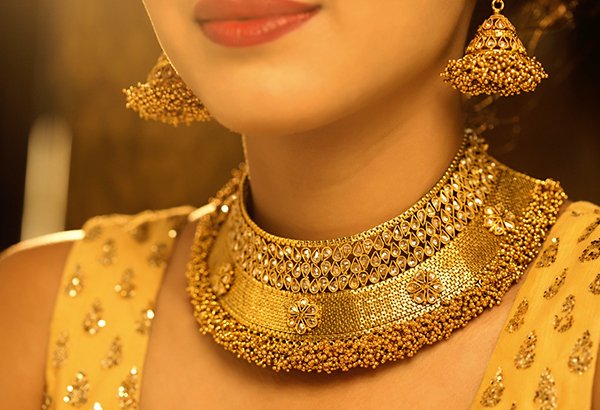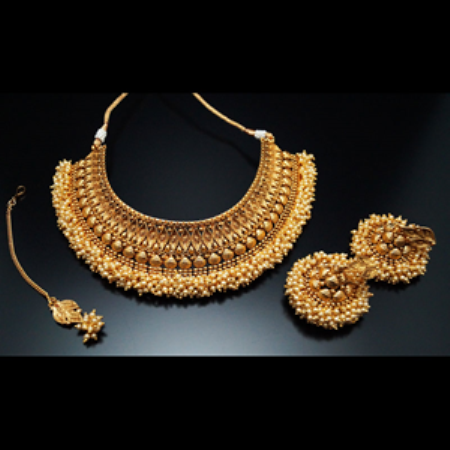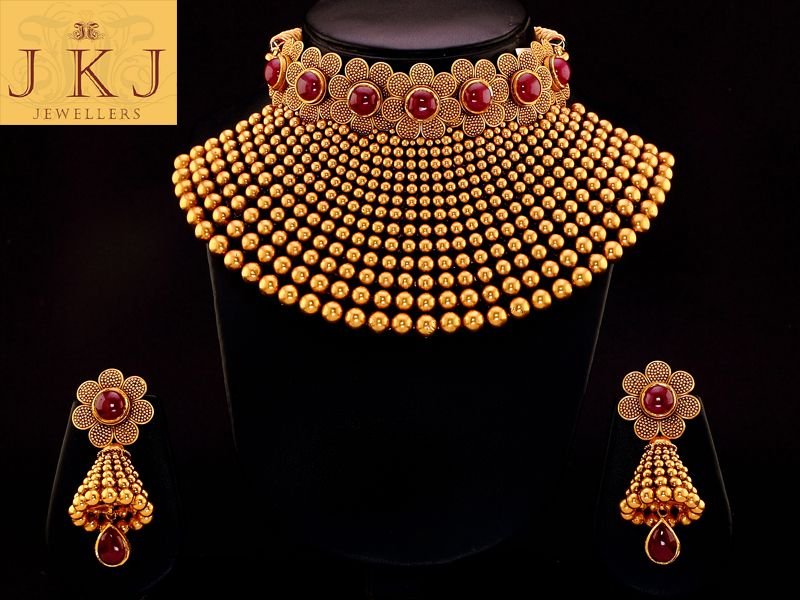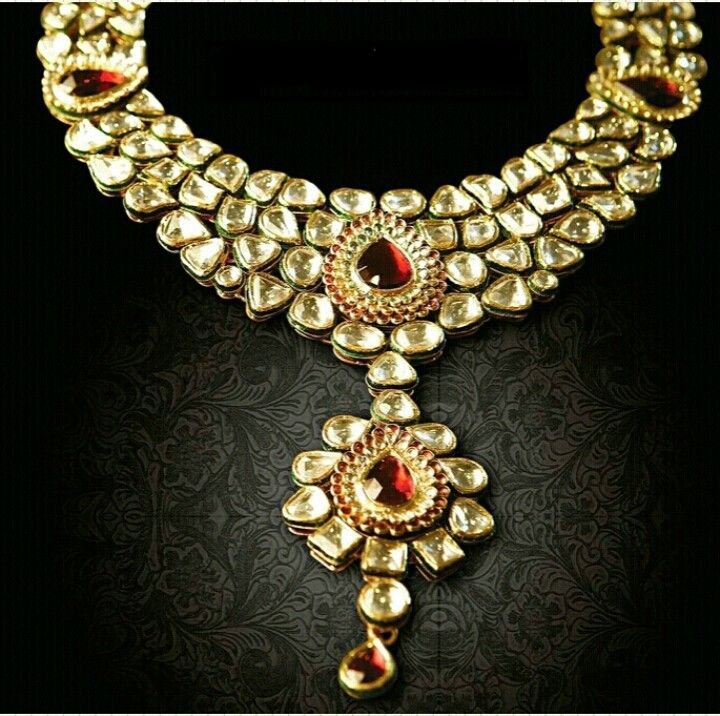Jewellery (British English) or jewelry (American English consists of decorative items. It is worn for personal adornment, such as brooches, rings, necklaces, earrings, pendants, bracelets, and cufflinks.
Jewellery may be attached to any part of the body or the clothes. From a western perspective, the term is restricted to durable ornaments, excluding flowers. For many centuries metal is often being combined with gemstones. It has been the normal material for jewellery, but other materials such as shells and other plant materials may be used.
It is one of the ancient type of archaeological artefact – with 100,000-year-old beads made from Nassarius shells thought to be the oldest known jewellery.

The basic forms of jewellery usually varies between cultures. But are often extremely long-lived. In European cultures the most common forms of jewellery listed above have persisted since ancient times. The other forms such as adornments for the nose or ankle, important in other cultures, are much less common.
Jewellery can be made from a wide range of materials. Gemstones and similar materials such as amber and coral, precious metals, beads, and shells have been widely used, and enamel has often been important. In most cultures jewellery is being considered as a status symbol. For its material properties, its patterns, or for meaningful symbols. Jewellery has been made to adorn nearly every body part, from hairpins to toe rings, and even genital jewellery. The patterns of wearing jewellery between the sexes, and by children and older people can vary greatly between cultures, but adult women have been the most consistent wearers of jewellery. In modern European culture the amount worn by adult males is relatively low compared with other cultures and other periods in European culture.

The word jewellery is derived from the word jewel, which was anglicised from the Old French “jouel“. In French and a few other European languages the equivalent term, joaillerie, may also cover decorated metalwork in precious metal such as objets d’art and church items, not just objects worn on the person.

Impact on society
Jewellery has always been used to denote status. In ancient Rome, only certain ranks could wear rings. Later, sumptuary laws dictated who could wear what type of jewellery. This was also based on rank of the citizens of that time. Cultural dictates have also played a significant role. .

Conversely, the jewellery industry in the early 20th century launched a campaign to popularise wedding rings for men, which caught on, as well as engagement rings for men, which did not, going so far as to create a false history and claim that the practice had medieval roots.
By the mid-1940s, 85% of weddings in the U.S. have featured a double-ring ceremony, up from 15% in the 1920s. Religion has also played a significant role in societies influence.
Islam, for instance, considers the wearing of gold by men as a social taboo, and many other religions have edicts against excessive display.